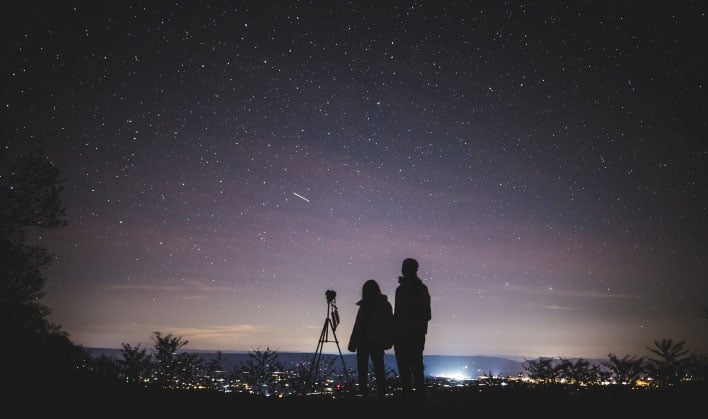How To Catch The Full Sturgeon Supermoon And Delightful Perseids Meteor Showers This Week

Supermoons are not perfectly defined. The concept is intended to reflect the times at which the moon enters its full moon phase and perigee at close to the same time. The perigee is the point in an orbit around Earth where the two bodies are closest, so when these overlap the effect causes the moon to appear much larger and brighter in the sky than normal.
The moon’s orbit is not perfectly regular, either. Some perigees bring the moon closer to Earth than others. This month’s perigee will be reached on August 10th at 1:00 p.m. Eastern. The moon will be 223,586 miles from Earth at this time which places it outside of the sub-223,000 mile definition used by some. What’s 600 miles between friends, anyhow?
The sturgeon full moon gets its name from the Maine Farmer's Almanac. The Almanac began publishing the Native American names for full moons in the 1930's. The Algonquin tribe associated this time with excellent fishing in the Great Lakes area where they could find the large fish.
Of course, observers will have more than an instantaneous moment to see the sturgeon full moon in all its glory. The moon will appear visually full from Wednesday morning until Saturday morning. This should hopefully give viewers extra chances to see it if weather tries to get in the way.

The sturgeon moon is joined by the Perseids meteor shower, which also peak Thursday and Friday. The bright moon may make the meteors appear faint in its vicinity. Gazers will want to keep their attention on darker areas of the sky and shield the moon from view, if possible. Urban observers will be unlikely to make out the faint flashes, so get out to a remote location, if possible.
The Perseids originate from the tail of the Swift-Tuttle comet. It leaves a trail as it flies near the sun on its orbit every 133 years. The Earth crosses this debris field each year resulting in the meteor shower. Swift-Tuttle last visited in 1992 and is not due back until 2125.
The two prior supermoons this year occurred in June and July. While no more supermoons are on the docket this year, there is a lunar eclipse coming on November 8th.
Top Image Credit: Chris Goetting/HotHardware

